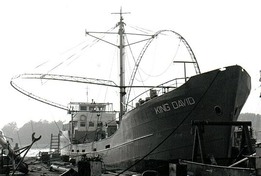© 2014-


Capital Radio - History
The origins of Capital Radio, lay not in a commercially orientated organisation, but in a foundation for professional broadcasters -
The declared aim of the station was to provide a ' respectable, ethical and professional radio service for European audiences in keeping with the standards proclaimed by the Society'. The station's policy also provided for it to carry two hours of religious programmes each day as well as time allocated for paid political broadcasts.
Tim Thomason engaged the assistance of British author and publisher Paul Harris, who had written a number of books about offshore radio, and together they set about examining the practicalities of launching the new station. By December 1969 Thomason had arranged finance from Dutch businessman Dirk de Groot, who lived in Switzerland and operated the Liechtenstein based Mississippi Trade and Investment Corporation.
A holding company, Kangaroo Pioneering Co. Est. was established in Liechtenstein, as a joint venture between the Mississippi Trade and Investment Corporation as financiers, and the Saltwater Foundation, who were ideologically rather than commercially involved in the project.
At the end of January 1970 the organisation found and purchased a Dutch trawler, which was to be used as the station's tender and, in early February 1970 a former coaster, the Zeevaart, was purchased to house t he planned offshore station. The vessel was renamed King David and taken to Zaandam, near Amsterdam for conversion into a radio ship.
he planned offshore station. The vessel was renamed King David and taken to Zaandam, near Amsterdam for conversion into a radio ship.
Meanwhile, the station’s tender, Kangaroo, sailed to the British port of Scarborough in North Yorkshire to collect essential items of radio equipment -
While work progressed on converting the King David arrangements were made to re-
The aerial system designed for the station was also unique -
By the end of April 1970 work was completed and the King David left IJmuiden Harbour on 25th April to commence test broadcasts. However, the hinged segments of the ring aerial buckled as they were lowered and the vessel was forced to return to port for repairs. The King David set sail again on 1st May 1970 and this time a short test broadcast was made using a tape recording of the BBC World Service to prove that the, until then, theoretical aerial system did in fact work. Further work was undertaken on the ship and her transmitting equipment during May 1970, while on land programme tapes were recorded in studios in Bussum.
During the evening of 13th June 1970 the King David quietly moved to an anchorage off Noordwijk, and official test transmissions started the following day, but the station was still plagued by technical problems, mostly associated with its ring aerial system. The King David had to put into harbour again at the end of June after the aerial system collapsed again during a storm.
A new, stronger, double ring aerial was installed and the station resumed test transmissions on 14th July 1970, but further problems followed with the transmitter and aerial insulators and it was some weeks before vital spare parts were obtained from America.
Regular programmes started officially at 8.00am on 1st September 1970 the first two hours consisted of pre-

The King David being converted to a radio ship with a unique ‘ring’ aerial
Photo: Hans Knot

Click on picture to enlarge
History
Key Dates
Ship and Location



Technical
Staff


Programmes


Treasure Chest


Back to Capital Radio


Back to Netherlands/Belgium Gallery
